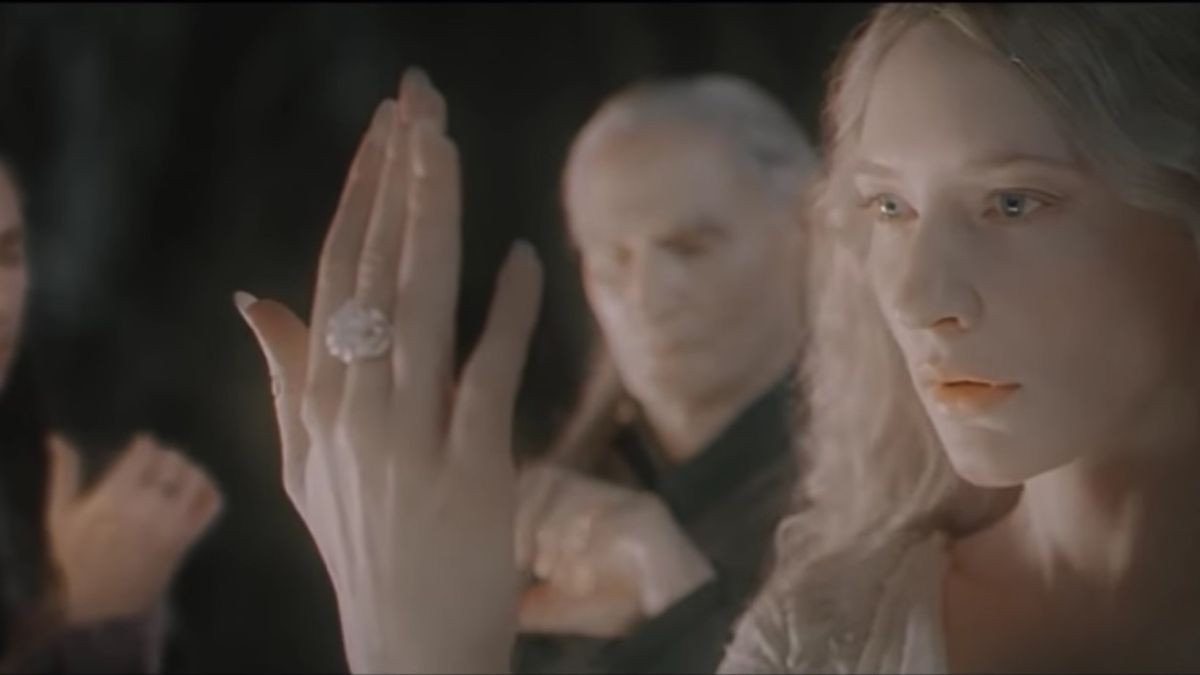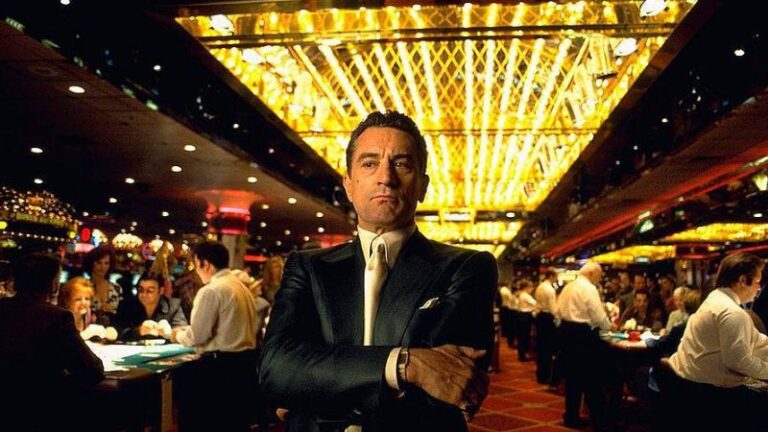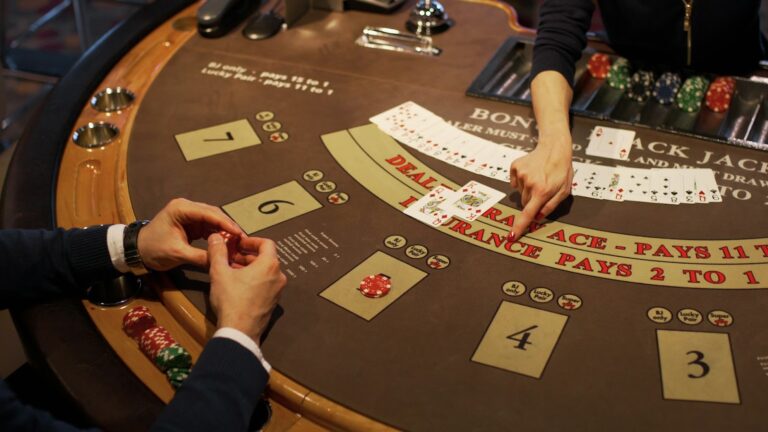What Are the Three Rings of the Elves in The Lord of the Rings?

In this article, we will explain everything about these magical artifacts called Three Rings, what are they, what are they called, what’s magical about them and everything else you need to know about Three Rings of the Elves in Lord of the Rings.
There are three rings of the Elves, three of the Rings of Power, and they are called Narya, Nenya, and Vilya after the principal elements of air, fire, and water (respectively).
In Tolkien’s fictional world of Middle-earth, Three magic Rings are forged in Eregion. These rings are the most powerful after the One Ring.
The Three Rings were made by the elf Celebrimbor around 1590 in the Second Age after Sauron left Eregion. These rings were not influenced by Sauron because he did not participate in their creation. However, they were associated with the One Ring because Celebrimbor made them using the skills taught by Sauron. After seeing Sauron’s ideas, the elves hid the rings and never showed them publicly. After the destruction of the One Ring, their guards took them from Middle-earth.
Commentators have observed that the Three Rings enabled the Elves to halt the passage of time within their realms, especially in Lothlórien where Galadriel wielded Nenya. Others have noted that their power was benevolent, in sharp contrast to the One Ring, and could be used to protect and to heal; and that Tolkien uses the Three Rings to elaborate the angelic and sacrificial aspects of the Elves in the battle between good and evil in the War of the Ring.
Three Rings of the Elves
Narya
The first of these three named, Narya, was littered with rubies. The name itself is derived from the Quenyan word nár meaning fire. It was also called Great Narya, the Ring of Fire and the Red Ring.
The Unfinished Tales of Númenor and Middle-earth states that Celebrimbor, at the beginning of the War of the Elves and Sauron, gave Narya, along with Ring Vilya, to Gil-galad, High King of Noldor. Gil-galad entrusted Narya to his ally Cırdan, Círdan the Shipwright in Mithlond, who kept him even after Gil-galad’s death. However, The Lord of the Rings states that Gil-galad only received Vilya, and Círdan received Narya immediately as well as Galadriel Nenyu.
On Gandalf’s arrival in Middle-earth in the Third Age, Círdan realized that Gandalf was, in fact, a Maiar from Valinor, so he handed him a ring to help him in his efforts. “Take this Ring now,” he said; “for your labors and anxieties will be heavy; while in all things he will support you and protect you from fatigue. For this is the Ring of Fire, and thus you may be able to light your hearts with heroism from ancient times in an increasingly icy world.” (Círdan to Gandalf).
It was only in Grey Havens that Gandalf wore Narya openly just before leaving Middle-earth.
Nenya
The second ring, Nenya, was made of mithril and coated with “white stone,” probably a diamond. The name is derived from the Quenyan word nén meaning water. It was also called the Diamond Ring, the Water Ring, and the White Ring.
Mistress Galadriel of Lothlórien wears this Ring that shines like stars; Frodo Baggins sees him because he is wearing the One Ring, and Samwise Gamgee tells Galadriel that he saw the star through her fingers. In many editions, this is referred to as “finger” — which sounds more mystical because it seems that the finger has somehow become translucent — but The Treason of Isengard, chapter 13, note 34, notes that this is a mistake.
Nenya had the power to protect against evil, however, the fact that the orcs repeatedly attacked Lothlórien indicates that the ring had no effect on the armies. It is alleged that Lothlórien could not have fallen, only if attacked by Sauron himself. Galadriel used her ring power to maintain Lothlórien, but this also heightened her longing for the sea and Aman.
After Sauron was defeated and the One Ring destroyed, the power of this ring began to fade. Galadriel took Neny with her to Mithlond and, along with other elven ring wearers, traveled further west. After the ring departed, the magic and beauty of Lothlórien began to fade. And the marvelous Mallorne trees were slowly withered, with the exception of that tree in Hobbiton planted by Samwise Gamgee that had grown for centuries. Lothlórien was slowly abandoned, so that in the 121st of the Fourth Age when Arwen went to die there it would be completely abandoned and in ruins.
Vilya
The third ring, Vilya, is made of gold and festooned with “big sapphire.” The name is derived from the Quenyan word vilya meaning air. It was also called the Sapphire Ring, the Ring of the Air, or the Blue Ring.
Vilya is usually considered to be the most powerful of these three rings, as also stated in the final chapter of The Return of the King. Vilya’s exact power is not mentioned anywhere, yet it seems it could have healed and preserved as mentioned in The Silmarillion, that Celebrimbor made the Three Rings to heal and preserve rather than increase the strength of each individual wearer like the Seven, Nine and other smaller rings. There are also some indications that Vilya had some power over some of the elements, referring to the occasion when Elrond called a water torrent that prevented Nazgûl from attempting to capture Frodo and the One Ring.
When Sauron destroyed Eregion, Vilya was taken to the Elven King Gil-galad by the elves in distant Lothlórien, where it was later handed over to Elrond, who carried it around the end of the Second Age and throughout the Third Age of Middle-earth. Since Gil-galad, at the time the rings were divided, was the High King of the Noldor Elves and the most appropriate person to guard the most powerful of the Three Rings. After Sauron’s fall, Vilya’s power slowly disappeared, and at the end of the Third Age, Elrond carried him across the sea.
Rings of the Elves powers
Preservation
The Three Rings did near-perfectly what the others could not. With the Elven Rings, the bearers prevented the passing of time in their realms in a figurative sense, what Tolkien referred to as ‘weariness’. Imladris, occupied by Elrond with Vilya, was a beautiful place where the Elves could live in peace. Gandalf wore Narya and it helped him bear the passage of time more easily.
The most pronounced change was in Lothlorien though, where Galadriel resided with Nenya. Time there was essentially stopped, the forest as it had been in ages past. It too was a stronghold of the Elves, where they lived in relative freedom from the curses of Morgoth. Even Frodo comments on how time and decay are different among the trees of Lothlorien.
Protection
The Rings also provided some degree of protection to those that wore them and the surrounding area. Lothlorien is again the most notable of these: between Galadriel’s own power and that of Nenya, evil could not enter the heart of the forest. Only Sauron could have done that if he came personally; his armies were unable to dominate Lothlorien in a very large part to the Ring Galadriel wore.
Likewise, Elrond used it to secure Imladris and strengthen it, though these details are vaguer. On a smaller scale, Gandalf could use Narya to inspire bravery and courage in himself and others around him, rekindling their hearts. There is also little evidence that Narya protected Men from the Black Breath, a miasma of fear and despair around the Nazgul.
Power
All of the Rings of Power increased the natural power of the one wearing them, and it is reasonable to assume that the Elven Rings did the same. However, unlike the One, and possibly the other Great Rings, they don’t appear to have given the wearer the ability to dominate others. It is assumed that the Rings have specific, greater powers too, though these are not known or specified.
The situation is complicated in that all three were worn by being of great strength already. It is difficult to know what feats of Galadriel were hers alone, her own while enhanced by the Ring or the power of the Ring alone. Likewise for Gandalf and Elrond.
Overall, the power of the Three Rings was in preservation and protection, as all of the Rings of Power were intended to be. These three are the ones that succeeded in the goal intended by Celebrimbor. They likely held unique powers, but we do not know what they are.
Why did the Elves only get 3 rings
The Elves made the Rings themselves, with the help of Sauron! Celebrimbor was the leader of the Elves of Eregion/Hollin, the area west of Moria (about the area the Fellowship travels before they get to Moria). There are 20 Great Rings:
- 16 were made by the Elves and Sauron together
- the Three Rings of the Elves were made by Celebrimbor in secret, without Sauron’s help, but using his teachings. It’s made clear that Sauron never touched them. Things went sour when Sauron made the One Ring, and the Elves were aware of it and took off their Three Rings, which made Sauron invade Eregion. The Elves managed to hide the Three Rings and they ended up ultimately with Elrond, Galadriel, and Círdan (who gave his to Gandalf). Sauron took the 16 Rings from the Elves and distributed them: 7 for the Dwarves, 9 for Men (who became the Ringwraiths). The survivors of Eregion went on to found the hidden home of Rivendell under Elrond.
So the Elves didn’t receive the Tree Rings, Sauron never possessed them. Sauron also regained a bunch of the Dwarf Rings, as the Dwarves were not easily corrupted. And since he lost the One Ring, he controlled the Ringwraiths by keeping their Nine Rings himself.
Some speculations about why did Elves get 3 rings, Dwarves 7 and Men 9.
7 houses of the Dwarves go way back in the Silmarillion tradition, so it seems obvious that there is one ring for each such house, although, as we can recall, Tolkien didn’ write anything about that on his pages.
3 for the Elves, and again it’s speculation, but the elemental associations of the 3 rings (Fire, Water, Air) chime nicely with the last resting places of the 3 Silmarils – one in a fiery chasm, one thrown into the sea and one borne in the skies by Earendil. Whether there’s any meaning intended in that, or whether it’s pure coincidence, we don’t know.
There were also 3 kindreds of Elves, but – obviously, because the Vanyar were off in Valinor – the initial division of the Elven rings didn’t match those.
9 for the Men – it is known why Sauron gave the most to the Human Kings because they were the easiest to control, but why exactly nine, it is not explicitly specified.
Significance of Three Rings
Jason Fisher, writing in Tolkien Studies, notes that Tolkien developed the names, descriptions, and powers of the Three Rings late and slowly through many drafts of his narratives. In Fisher’s view, Tolkien found it difficult to work these Rings both into the existing story of the One Ring and into the enormous but ring-free Legendarium.
Some of the descriptions, such as that Vilya was the mightiest of the Three, and that Narya was called “The Great”, were added at the galley proof stage, just before printing. The rings had earlier been named Kemen, Ëar, and Menel, meaning the Rings of Earth, Sea, and Heaven.
Catholicism
Gwyneth Hood, writing in Mythlore, explores two Catholic elements of the story of the Three Rings: the angelic and sacrificial aspects of the elves in the War of the Ring. To the hobbits of the Fellowship of the Ring, the elven Ring-bearers appear as angelic messengers, offering wise counsel.
To save Middle-earth, they have to accept the plan to destroy the One Ring, and with it, the power of the Three Rings, which embody much of their own power. Hood notes that while Gandalf as one of the supernatural Maiar sent from Valinor is “remarkably unlike an elf”, out of the wielders of the Three Rings he is the character who most closely combines the angelic and the sacrificial.
The poet W. H. Auden, an early supporter of Lord of the Rings, wrote in the Tolkien Journal that good triumphs over evil in the War of the Ring, but the Three Rings lose their power, as Galadriel had prophesied: “If you succeed, then our power is diminished, and Lothlórien will fade, and the tide of time will sweep it away”.
Hood further writes that Tolkien was suggesting technology such as the making of Rings of Power is in itself neither good nor evil; both the Elves and Sauron (with his armies of orcs) use that technology, as they also both make and wear swords and mail armor, and shoot with bows.
Benevolent power
Hood notes, too, that the elves use the power of their rings benevolently, in sharp contrast to Sauron’s domineering intentions for the One Ring. Galadriel uses her ring to create a kind of Earthly Paradise in Lothlórien.
Alexis Levitin, writing in the Tolkien Journal, adds that the power for good in the Three Rings is limited in scope, not being usable for war or for dominating others; it can be used for purposes such as to protect a place such as Rivendell or Lothlórien, or to heal.
Halting the passage of time
Commentators such as Kevin Aldrich and David Brin have pointed out that the Elves made the Three Rings to try to halt the passage of time, or as Tolkien had Elrond say, “to preserve all things unstained”. This was seen most clearly in Lothlórien, which was free of both evil and the passage of time.
Epigraph about Three Rings
Three Rings for the Elven-kings under the sky,
Seven for the Dwarf-lords in their halls of stone,
Nine for Mortal Men doomed to die,
One for the Dark Lord on his dark throne,
In the Land of Mordor where the Shadows lie,
One Ring to rule them all, one Ring to find them,
One Ring to bring them all and in the darkness bind them
In the Land of Mordor where the Shadows lie
— J.R.R. Tolkien, The Lord of the Rings
MORE FROM VOICE FILM






